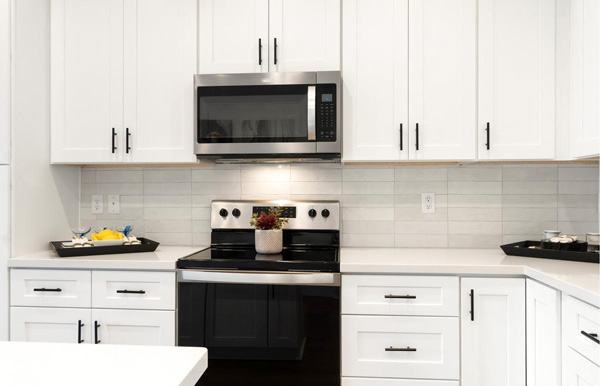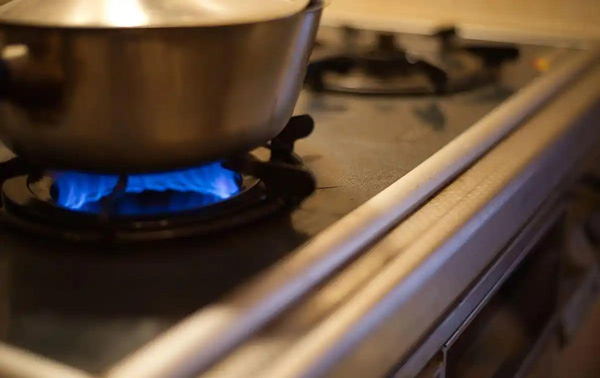As the core equipment in a home kitchen, the selection and measurement of gas stove dimensions are directly related to installation suitability, usage convenience, and the overall aesthetics of the kitchen.
1. Definition of Gas Stove Dimensions
The dimensions of a gas stove typically include the following aspects:
● Overall Dimensions: Refer to the length, width, and height of the entire gas stove, i.e., the external specifications of the product itself.
● Cutout Dimensions: Refer to the size of the incision reserved on the kitchen countertop during installation, also known as the embedded dimensions.
● Burner Spacing: The distance between burners in dual-burner or multi-burner gas stoves, which affects the cooking operation space.

1.1 Common Overall Dimensions of Gas Stoves
Dual-Burner Gas Stoves:
● Length: Approximately 600–750 mm
● Width: Approximately 400–450 mm
● Height: Approximately 130–160 mm
● Applicable Scenarios: Ordinary family kitchens.
Triple-Burner or Multi-Burner Gas Stoves:
● Length: Approximately 800–1000 mm
● Width: Approximately 450–500 mm
● Height: Approximately 150–180 mm
● Applicable Scenarios: Large families or commercial kitchens.
1.2 Common Cutout Dimensions
Cutout dimensions are usually slightly smaller than the overall dimensions to ensure the gas stove edge can rest on the countertop. Specific ranges:
Dual-Burner Stoves:
●Length: Approximately 560–680 mm
●Width: Approximately 350–400 mm
Triple-Burner Stoves:
●Length: Approximately 750–900 mm
●Width: Approximately 400–450 mm
1.3 Burner Spacing
●The center-to-center spacing of burners in dual-burner gas stoves is generally 240–300 mm to ensure that two pots can be used simultaneously without interference.
●The spacing in triple-burner stoves may be slightly smaller, approximately 200–250 mm.
2. How to Use Distance Measurement Tools to Obtain Gas Stove Dimensions
2.1 Measuring an Existing Gas Stove (Replacement Scenario)
1.Overall Dimensions:
●Use a tape measure to measure the length, width, and height of the gas stove, recording the maximum values (including protruding parts such as knobs and frames).
●Note whether the height of the legs (for tabletop stoves) is included.
2.Cutout Dimensions:
●Remove the old stove and measure the length and width of the countertop incision.
●Check if there is a reserved overlap at the incision edge (usually 5–10 mm).
3.Depth: Use a laser distance meter to measure the height of the space below the countertop to ensure the bottom of the new stove does not touch the internal structure of the cabinet.
2.2 Measuring for a New Installation (Renovation Scenario)
1.Countertop Space:
●Determine the placement position of the gas stove and measure the available length and width of the countertop.
●Reserve at least 10–15 cm of operation space on both sides to avoid overcrowding.
2.Cutout Estimation:
●Refer to the cutout dimensions in the instruction manual for the selected gas stove model.
●Use a pencil and ruler to mark the incision position on the countertop, and use a level to ensure horizontal alignment.
3.Pipeline Position: Measure the distance from the gas pipeline interface to the countertop to ensure it matches the gas inlet of the stove.
2.3 Measuring Tools and Techniques
1.Tools: Tape measure, laser distance meter, level, marker pen.
2. Techniques:
●Keep the tape measure straight during measurement to avoid errors caused by bending.
●Take multiple measurements with the laser distance meter and calculate the average to ensure accuracy (error controlled within ±2 mm).
●Check if the countertop is level, and adjust it before making the incision if there is an incline.
3. Precautions for Installing a Gas Stove
3.1 Dimension Matching
●The cutout dimensions must be consistent with those in the gas stove instruction manual. A too-large cutout may cause instability, while a too-small cutout may prevent embedding.
●Leave a 1–2 mm gap for easy installation and heat dissipation.
3.2 Safety Distances
●Maintain at least 30 cm between the gas stove and walls or hanging cabinets to avoid high-temperature ignition risks.
●Keep a safe distance between the burners and the gas pipeline to prevent leakage hazards.

3.3 Ventilation Conditions
●Ensure good ventilation in the kitchen and check smooth exhaust after installation.
●Leave ventilation holes below embedded stoves to avoid heat accumulation.
